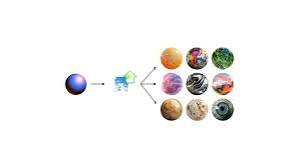Ethscriptions are the latest trend in the Ethereum ecosystem.
“What are Ethscriptions?” you ask.
That’s what this beginner’s guide is all about. Everything you need to know about Ethscriptions in less than five minutes.
What Are Ethscriptions?
A are the Ethereum equivalent of Bitcoin Ordinals. They are “NFTs without NFTs,” as they allow you to share data ─ for now only images ─ without creating ERC-721 tokens. Their inventor claims are “cheaper” and “more decentralized” than their token equivalents.
To create an Ethscription, you convert an image not bigger than 96 kilobytes into a special code called a Base 64-encoded data URI. You send this image with a 0 ETH transaction to your desired recipient and insert the hex data in the “Hex data” field.
Who Created Ethscriptions?
were created by Tom Lehman, the co-founder of the music website Genius.com and the Capsule 21 podcast123. He uses the pseudonym Middlemarch on Twitter:
Lehman launched protocol on June 17, 2023 and tweeted several times about Bitcoin Ordinals before launching them, suggesting that Ordinals inspired him to create this new protocol.
Ethscriptions vs NFTs
The key differences between Ethscriptions and NFTs are:
- use transaction calldata to store the image. NFTs use smart contracts to store the metadata and link to an external source storing the content.
- are technically cheaper to create and transfer than NFTs, as they only require a 0 eth transaction with some hex data.
- You can make the argument that Ethscriptions are more decentralized than NFTs since they host content natively on Ethereum, without relying on third-party storage.
- support all data URIs, while NFTs are limited by the smart contract standards and platforms they use.
- are currently limited to images, something that Lehman plans to change in the future. However, images have also been by far the most sought-after content for NFTs.
- I have a size limit of 96 kilobytes, restricting the potential for more complex and detailed data at the time of writing.
- may not be compatible with some existing NFT platforms or standards.
Examples of most significant Ethscription collection is Ethereum Punks, a collection of 10,000 “ethscribed” punks on Ethereum. It minted out within hours of the launch:
How To Create Your Own Ethscription
I can be created within a minute.
2. Convert the URI to hex using hexhero or other similar tools.
3. Send a transaction to the address with the hex data in the “Hex data” field. The address will own the Ethscription and the transaction costs 0 ETH.
4. OR, you can also connect your wallet and create your own Ethscription directly on the website.
How To Trade Ethscriptions
You can trade Ethscriptions on platforms like Opensea. Adam McBride created EmblemVault, a way of storing your Ethscriptions in a vault
Ethscriptions, a relatively new form of NFT, can be traded on a few select platforms. Here’s a breakdown of the process:
Where to Trade Ethscriptions:
- OpenSea: Currently, the most popular platform for trading Ethscriptions is OpenSea, a leading NFT marketplace.
- Other Options: A few other NFT marketplaces, such as Emblem Vault, might also support Ethscription trades. It’s always recommended to check the specific platform’s supported NFT types before attempting a trade.
Trading Process (using OpenSea as an example):
- Connect your Crypto Wallet: You’ll need a crypto wallet compatible with the platform you choose (e.g., MetaMask, Coinbase Wallet). Connect your wallet to the platform to initiate trading.
- Browse Ethscriptions: OpenSea allows browsing NFTs by collection, creator, or using search filters. Look for Ethscriptions you’re interested in purchasing.
- Select an Ethscription: Once you find an Ethscription you want, click on it to view details like ownership history, description, and associated files.
- Trading Options: Depending on the listing, you might see options to buy the Ethscription at a fixed price (direct purchase) or participate in an auction.
- Purchase or Bidding: If it’s a fixed-price listing, proceed with the purchase by following the platform’s instructions. This will likely involve confirming the transaction fee and approving it in your connected wallet. For auctions, place your bid according to the auction format (timed or open).
- Finalize the Transaction: Once your purchase or bid is confirmed, the transaction will be processed on the blockchain, and the Ethscription will be transferred to your wallet if you win the bid or purchase is successful.
Important Notes:
- Transaction Fees: Expect to pay transaction fees (gas fees) on the Ethereum blockchain for any Ethscription trades. These fees can vary depending on network congestion.
- Research Before You Buy: As with any NFT purchase, it’s crucial to research the Ethscription, its creator, and the associated project before committing to a purchase.
By following these steps and keeping the considerations in mind, you can navigate the process of trading Ethscriptions on compatible platforms.




![The Potatoz NFT Collection: An Essential Guide[2024]](https://cdatacap.com/wp-content/uploads/2024/06/Picsart_24-06-01_23-24-49-237-551x431.jpg)
Leave feedback about this